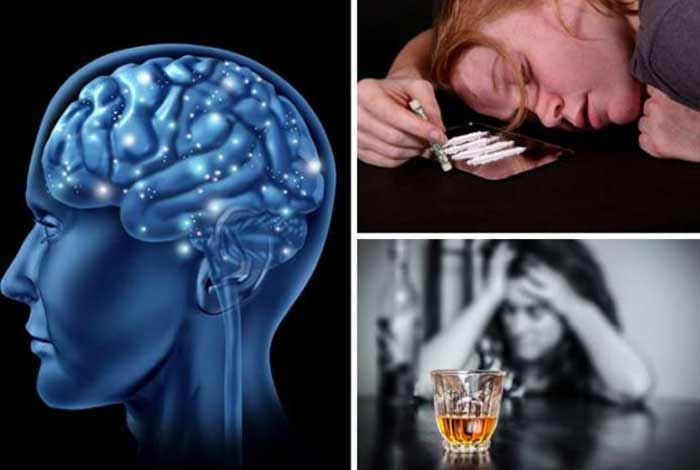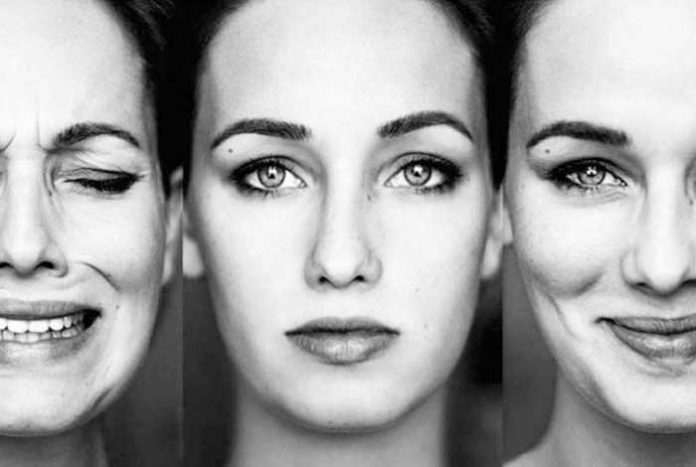
Bipolar Disorder or Bipolar Affective Disorder, formerly known as manic-depression, is a disorder affecting the mental health of an individual and is characterized by severe mood swings, affecting the daily life of that individual. Patients of bipolar disorder experience periods of high energy and extremely elated behavior, called manic episodes accompanied by an extremely low and hopeless period, known as depressive episodes. In the interim between the two episodes, may lie a period of normal mood. Sometimes the manic episodes are less severe and are referred to as hypomanic episodes. The frequency and severity of the episodes vary from person to person. Thus, drastic change in mood, which are poles apart, is suggestive of a “bipolar disorder”.
The exact cause of the disease is unknown and genetic and environmental factors have been implicated in causing the disease.
As per recent statistics by National Institute of Mental Health, approximately 4.4% of American adults are affected by bipolar disorder at some time in their lives. [1]
Although mood swings are the key features of bipolar disorder, it should not be confused with normal mood changes experienced due to the ups and downs of life. The mood swings in bipolar disorder features episodes of mania, hypomania or depression lasting for several days to weeks (or even longer). These mood changes are severe enough to disrupt day-to-day activities, including sleep cycle, behavior and it may even affect an individual’s sense of judgment.
Bipolar disorder is a life-long condition and usually does not resolve without medical intervention. However, continuous therapy has shown to improve the quality of life of people facing the brunt of the disease.
Types
Based on the variation in the frequency and severity of symptoms, bipolar disorder is categorized into following types. [2]
1. Bipolar I Disorder
This type of bipolar disorder is characterized by manic episode, lasting for at least 7 days or an extremely severe episode that requires hospitalization. This manic episode may be preceded or followed by a hypomanic or depressive episode. Usually, depressive episode lasts for at least 2 weeks. There are intermittent periods of normal mood. Sometimes, manic and depression episode may occur concomitantly.
People suffering from Bipolar I disorder may have other mental conditions such as Attention Deficit Hyperactivity Disorder (ADHD), substance abuse and anxiety disorder.
2. Bipolar II Disorder
This variant of bipolar disorder, shows features of depressive episodes and hypomanic episodes, without a full-blown manic episode. Bipolar II disorder can be a life-threatening condition as the depressive episode may be severe enough to necessitate medical help.
3. Cyclothymic Disorder
It is a mild form of bipolar disorder, characterized by several episodes of depression and hypomania. A person is said to have cyclothymic disorder, when the following symptoms are experienced.
- Many episodes of hypomania and depression, lasting for at least 2 years, but with less severity as compared to bipolar I and II disorder.
- During the two symptomatic years, symptoms have lasted for at least half a year with symptom-free period lasting for not more than 2 months.
The point of significance here is that, although bipolar II disorder does not present with episodes of mania, it is not a milder form as the depressive episodes can be long and severe.
4. Other specified and unspecified bipolar and related disorders
This includes clinical cases where bipolar symptoms do not match symptoms of any of the three types mentioned above.
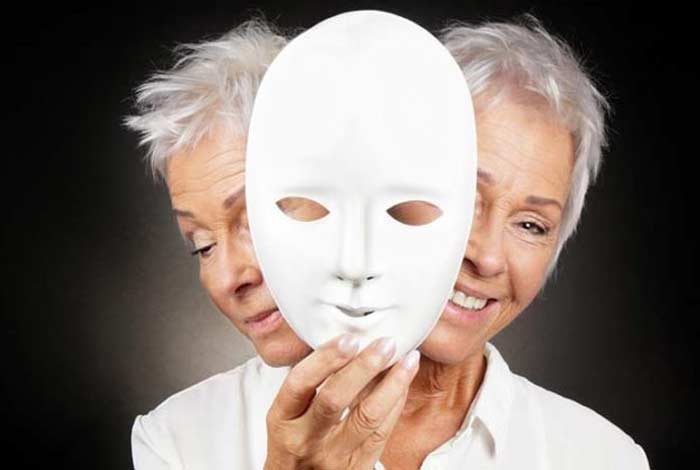
Symptoms
Bipolar Disorder can produce some distressing symptoms, affecting a person’s energy, thoughts, decisions and almost all daily activities. It can affect males and females of all ages. However, it is typically diagnosed in teenage and early 20s. It rarely affects people above 40 years of age.
American Psychiatric Association has laid down certain criteria to label an episode as manic, hypomanic or depressive. [3]
Manic Episodes
A manic episode is a period of unusually high energy-level and extreme irritability, that lasts for at least one week, along with at least three of the following symptoms.
- A sense of an exaggerated self-esteem, or grandiosity
- Reduced need for sleep
- Rapid loud speech and unusual talkativeness
- Getting distracted easily
- Creating an unrealistic schedule, i.e. scheduling activities more than one can accomplish
- Poor decision-making and a risky attitude, such as making foolish investments, going on buying sprees or reckless driving
- Racing thoughts and an abrupt change of ideas and thoughts
These manic episodes can sometimes trigger features of psychosis.
Hypomanic Episodes
It is a less severe form of manic episode, which lasts for only four days in a row. It usually does not cause any impairment in daily functioning of an individual.
Depressive Episodes
A depressive episode, usually presents with features of “clinical depression” and lasts for at least two weeks, along with at least five of the following symptoms (including the first two symptoms).
- Intense despair or sadness, i.e. feeling hopeless, worthless and helpless
- No interest in activities, which once seemed enjoyable
- A constant feeling of guilt
- Disturbed sleep cycle, i.e. sleeping too little or too much
- Restlessness and agitation or slow speech and movements
- Increase or decrease in appetite and/or weight
- Fatigue and low on energy
- Inability to think and make decisions
- Frequent suicidal thoughts
Although, the manic episode usually proceeds or precedes the depressive episode, there can be instances when the manic symptoms, i.e. high-energy and racing thoughts, can occur concomitantly with depressive symptoms, i.e. feeling hopeless and suicidal. Such clinical scenario is referred to as “Mixed Features” of Bipolar disorder.
The symptoms in children may show a distinct pattern, different from that of adults. Teenagers suffering from bipolar disorder may find it very difficult to lead a normal school-life. Similarly, adults with this disorder may have a stressful relationship with family, friends and spouse and may be having a difficult work-life.
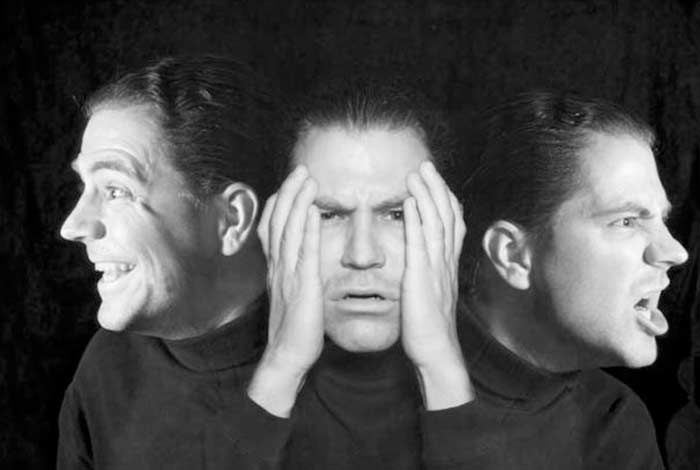
Risk Factors
Bipolar disorder can affect every individual. However, National Institute of Mental Health [4] and American Psychiatric Association [5] state certain risk factors that predispose an individual to bipolar disorder. These are listed below.
1. Brain structure and functioning
Research has shown that brain of people with bipolar disorder have some physical disparity as compared to that of a healthy individual. This shows that a particular brain structure and functioning may predispose an individual to bipolar disorder. However, this is still a subject of interest for the researchers and the significance of this risk factor is still unknown.
2. Genetics
Bipolar disorder has a genetic predisposition, i.e. people with certain genes are at a higher risk of developing bipolar disorder. However, the exact genetic make-up that is more susceptible to development of bipolar disorder, is not yet identified.
3. Family history
Bipolar disorder runs in family. Individuals with a first-degree relative suffering from bipolar disorder, are at a higher risk of developing it. Research has shown that 80 to 90% of individuals with bipolar disorder, have a relative suffering from bipolar disorder or depression.
4. Stress
It has been implicated as an important factor in the disorder. Periods of extreme stress may trigger the symptoms of bipolar disorder in vulnerable individuals.
5. Sleep disruption
It has been seen that the risk of developing bipolar disorder is more in a sleep-deprived individual.
6. Drug or Alcohol abuse
Episodes of bipolar disorder can also be triggered by drug and alcohol abuse.
However, not every individual with bipolar disorder shows the presence of above mentioned risk factor(s). Also, the absence of risk factors does not completely eliminate the possibility of developing bipolar disorder.
Do I have Bipolar Disorder?
If an individual has been experiencing drastic mood swings and is not able to function normally, it may be suggestive of bipolar disorder. If these symptoms are preceded by sleep-deprivation or a brief period of extreme stress, such as death of a closed one, then it raises a suspicion of bipolar disorder. Having a manic, hypomanic or depressive episode along with a family history of the disorder, strongly points in the direction of bipolar disorder. Presence of such episodes in an individual regularly consuming alcohol or drugs, should suspect bipolar disorder to be the cause of the symptoms.
However, not every manic and depressive episode is suggestive of bipolar disorder. Infrequent and brief period of highs and lows is a normal phenomenon. As already mentioned, symptoms lasting for several weeks and severe enough to disrupt daily activities, are suggestive of bipolar disorder.

Causes
The exact cause of bipolar disorder is still unknown. However, experts suggest that bipolar disorder is a multi-factorial disorder, i.e. a number of factors work together to cause the disorder. [6] These are described below.
1. Chemical imbalance in the brain
Research has shown that bipolar disorder is caused by an abnormality in the brain circuit and functioning of the brain. Brain functions are regulated by a group of chemicals, collectively known as neurotransmitters. These include noradrenaline, serotonin and dopamine. An imbalance in the levels of these neurotransmitters have been implicated as the cause of mood swings seen in bipolar disorder. Reduced levels of serotonin are seen in bipolar disorder. Dopamine influences the reward center of the brain and regulates sleep, attention, motivation and learning. In bipolar disorder, dopamine plays a role in switching from mania to depression. Research has shown that raised dopamine levels lead to manic episode and reduction of dopamine causes depressive episodes. Noradrenaline is a derivative of dopamine. Patients of bipolar disorder usually have low level of noradrenaline.
Recent research suggests that not just the levels of neurotransmitters, but the transmission of brain signals also play a significant role in bipolar disorder. [7]
2. Genetic factors
As already mentioned, genetic factors have been identified as a major causative factor of bipolar disorder. However, research in this domain is still active and no particular gene has been identified.
But, no single gene can cause bipolar disorder. Instead, a combination of genetic and environmental factors is necessary to trigger the episodes seen in bipolar disorder.
3. Trigger factors
Various environmental factors have been recognized that may trigger bipolar disorder. These are as follows.
- Stressful triggers: Certain stressful situations or circumstances can evoke bipolar disorder, such as death of a closed one, relationship hardships and physical, mental or sexual abuse.
- Sleep disturbances: Disturbance in sleep can also trigger bipolar disorder.
- Physical illness: There are various physical illnesses that can trigger and worsen the symptoms of bipolar disorder, such as cardiovascular diseases, hypothyroidism, hyperthyroidism, headache and obesity.
- Substance and alcohol abuse: are other important environmental factors, that may trigger manic-depressive episodes.
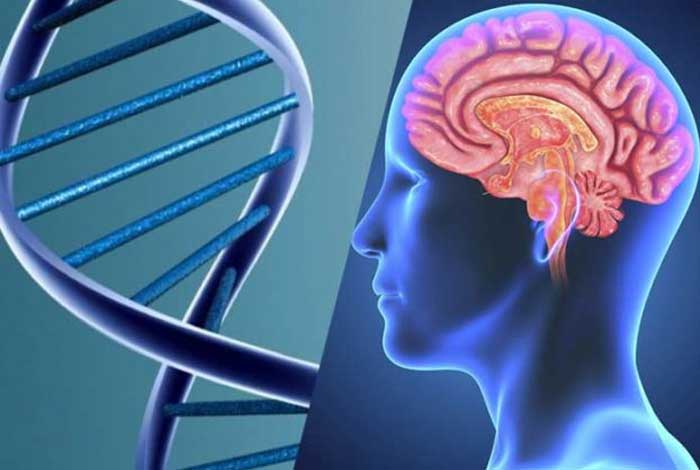
Prevention
There is no definitive way to prevent bipolar disorder. However, people at greater risk of developing bipolar disorder should look out for early warning signs. Also, individuals diagnosed with the condition should take preventive measures to avoid future episodes.
It is not uncommon to misinterpret bipolar disorder as depression. The manic episodes may often go unnoticed and individuals may not consider it to be a part of any mental health disorder. Bipolar disorder manifests as manic and depressive episodes, which have established a pattern. Hence, most people tend to overlook the symptoms. In such cases, family and peers should identify the symptoms and should encourage the individual to seek medical help.
Abstinence from alcohol and illicit drugs is another important preventive measure.
As already stated, bipolar disorder mostly affects teens and young adults. Hence, parents must look out for the initial signs of the disorder as teens suffering from bipolar disorder tend to become suicidal. Sudden changes in sleep pattern and behavior should not be ignored by the parents and medical help must be sought.
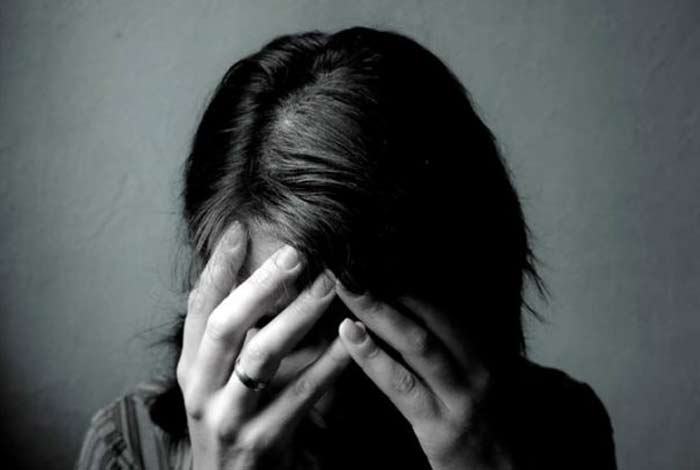
Diagnosis
Bipolar disorder poses many difficulties in diagnosis. Since bipolar disorder presents with varied frequency and intensity, it may be overshadowed by many other mental health illnesses, such as psychosis, schizophrenia, ADHD, borderline personality disorder, anxiety disorder, etc.
Substance and alcohol abuse is another factor that may mask the symptoms of bipolar disorder. People on alcohol and illicit drugs (such as cocaine) may also show manic and depressive episodes.
Patients of bipolar disorder usually report to the medical professional in their depressive phase as manic and hypomanic episodes are mostly ignored by the patients. This holds true especially in case of bipolar II disorder. In such cases, the clinical presentation of the patient may appear as a case of depression, more specifically unipolar depression.
Thus, consultation with a specialist is needed to curb all the diagnostic challenges. In this case, psychiatrist is the concerned specialist who can establish a definitive diagnosis. Various diagnostic approaches are described below.
1. Recording a thorough history
The first step to correctly diagnose any health condition is a thorough history raking. Doctor will ask details of all the symptoms being experienced by the patient. On suspecting bipolar disorder, the patient is referred to a psychiatrist.
2. Psychiatric assessment
Psychiatrist seeks a detailed aspect of all the emotions being felt by the patient. This may be done through conversation and questionnaires. This is an important diagnostic method as it helps in ruling out all other illnesses, which may present with similar features.
3. Physical Examination
If suspecting bipolar disorder, doctor do a physical examination of the patient to reveal the underlying cause, such as hypothyroidism, substance abuse, etc.
4. Mood Charting
Since bipolar disorder affects mood of an individual, patients are asked to maintain a mood chart. This mood chart will have all the recordings of patient’s daily moods. This will reflect the frequency and severity of mood changes, experienced by the patient. Thus, it helps in diagnosing the condition and also aids in treatment planning.
5. Criteria for Bipolar Disorder
Once the frequency and intensity of the episodes have been identified, the psychiatrist refers to the criteria laid down by the American Psychiatric Association (already mentioned in “Symptoms” section), thus establishing a final diagnosis.
Thus, diagnosis of bipolar disorder totally relies on the symptoms and there is no definitive test to diagnose the condition.
Treatment
Bipolar disorder is a chronic condition requiring life-long therapy. It has no permanent cure. However, it is a treatable condition. The goal of treatment is alleviating the symptoms of the patients and preventing the onset of future episodes. Various treatment modalities advocated in bipolar disorder are described below.
1. Medications
These form the mainstay of treatment of bipolar disorder. In order to control the manic, hypomanic and depressive episodes, certain medications are prescribed. These medications are listed below.
- Mood Stabilizers: This group of drugs is known to produce symptomatic relief in patients. Examples include lithium, carbamazepine, valproic acid and lamotrigine.
- Atypical Antipsychotics: These are the second-generation antipsychotic drugs, which are used when patient is not responding to other medications. Examples include olanzapine, aripiprazole, risperidone and ziprasidone.
- Anti-depressants: These are prescribed to combat depression seen in bipolar disorder. Examples of anti-depressants used in the condition are fluoxetine and citalopram. However, the sole use of anti-depressants may trigger manic episodes and worsen the condition. Hence, these are usually combined with other drugs, such as mood stabilizers or antipsychotics.
- Anti-anxiety medications: This group of drugs is used to relieve the anxiety and improve sleep pattern of the patient. However, unlike other medications, it is used only on a short-term basis. Example include benzodiazepines.
2. Psychotherapy
It plays a key role in treatment of bipolar disorder. It involves spending time with a trained therapist to discuss the hardships of the patient and help deal with the condition. It can be accomplished in an individual, group or family settings. It consists of various therapies, as described below.
- Inter-personal and Social Rhythm Therapy (IPSRT): This therapy focuses on maintaining a regular daily rhythm, i.e. sleep-wake cycle and mealtimes. It has been shown that stabilizing the daily routine and maintaining a consistent routine may prove beneficial in managing mood swings.
- Cognitive Behavioral Therapy (CBT): This therapy aims at locating the negative thoughts and feelings that evoke the manic-depressive episodes. It also helps in formulating a coping strategy for the patient.
- Family-focused therapy: This therapy emphasizes on the role of family in managing bipolar disorder. Family should communicate with the patient and provide support to help the patient cope with the mood swings.
3. Electroconvulsive Therapy (ECT)
It is also known as Electroshock therapy. It is a short-term therapy which is indicated in certain situations, as listed below.
- Patient cannot take medications, such as pregnant women
- Patient is not responding to conventional treatment approaches
- Patient is suicidal and it can be dangerous to wait for drugs to act
This procedure involves placing electrodes on the scalp of the patient, through which an electric current is passed to deliberately induce a brief seizure. This process can cause chemical alteration in the brain and can reverse the effects of the illness. Although it has a success rate of 75%, it has side-effects associated with the anesthesia administered prior to the procedure.
4. Transcranial Magnetic Stimulation (TMS)
Deep TMS is a newly discovered treatment modality for bipolar disorder. In this method, a magnetic field generator is placed near the head of the patient. This stimulates certain specific areas of the brain. Research has shown that it may cause remission in bipolar disorder patients. [8] However, it is usually indicated for patients not responding to conventional treatment.
It is important to understand that every patient is different. Hence, treatment is individualized. A combination of medication and psychotherapy is the most advocated and most effective treatment of bipolar disorder.
The worst fact about Bipolar disorder is that it tends to recur, i.e. once the medications are stopped, manic-depressive episodes start coming back. Hence, medications must be taken even when the patient feels fine. However, every patient may not respond equally well to same medication. Thus, it may take time to identify the most effective medication for each patient.
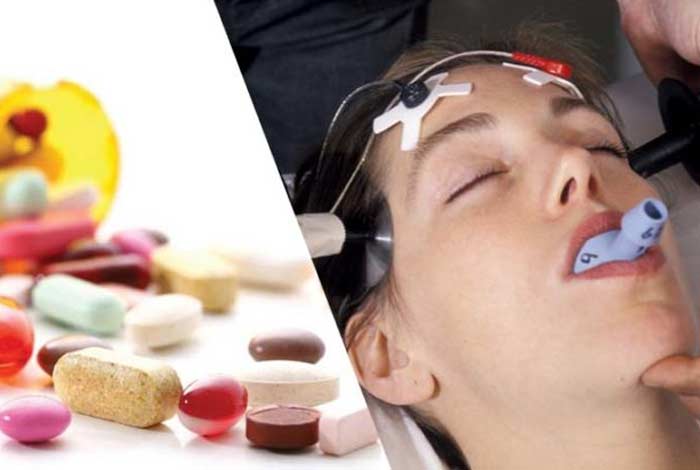
Care
Manic, hypomanic and depressive episodes can be overwhelming for the patient to deal with, especially for teenagers. Hence, moral support can play an important role in managing the disease.
Family and peer should understand the severity of the condition. They should assure the patient that the condition is treatable and can be effectively managed.
Patients of bipolar disorder often discontinue the medications, once the symptoms are relieved. Family and friends should make sure that the patient adheres to the prescribed drug regimen.
When alcohol and drug abuse are the inflicting factors, family and friends should support the patient in de-addiction and in severe cases, encourage the patient to seek professional help.
Family and peer must always notice the mood changes of the patient and should make sure that patient is not in any distress. Family members must realize that bipolar disorder can be a life-threatening condition as the depressive episode can sometimes be severe enough to make the patient suicidal. Recognize signs of suicidal tendency such as change in sleep pattern, change in behavior, living in isolation, not being able to express oneself or showing agitation and irritability. Such signs should be brought to the attention of a medical professional.

OTC
The medications used to treat bipolar disorder have some major side-effects. Hence, these are available only on a doctor’s prescription. However, it has been shown that fish oil and vitamin B supplementation can relieve symptoms of fatigue and anxiety in patients of bipolar disorder. But, supplementation should not be consumed without consulting the doctor as these can interfere with the treatment.

Self-Management Methods available
It may be arduous to deal with the manic-depressive episodes. But, taking certain measures can help the patient in managing the disease. Various self-management methods available for the patient are described below.
Education about the disease
Acceptance is the foremost step in managing the condition. Once diagnosed, talk with the doctor and understand the disease pattern. This helps in handling the anticipated consequences.
Maintain healthy relationships
Negative feelings can worsen the disease. Hence, it is important to stay in the company of people with positive attitude. Be around people who are understanding and supportive of the diseased condition.
Maintain a healthy routine
As already mentioned, sticking to a regular routine can help alleviate the mood changes in bipolar disorder. Thus, create a healthy routine involving a regular sleep-wake cycle, healthy diet and physical activity.
Keep a life-chart
National Institute of Mental Health recommends maintaining a life-chart, which will have a record of patient’s sleep pattern and daily moods. [9] This helps in recognizing the most effective medication for the patient.
Support Groups
Patient of any mental health illness can benefit from support groups. Interacting with people dealing with similar mood changes can ease-up the struggle of the patient. Sharing the coping mechanisms with each other can prove extremely supportive for the patients.
Avoid alcohol and drug abuse
Alcohol and drug abuse plays a major role in evoking episodes of bipolar disorder. Hence, patients must refrain from consuming alcohol and drugs. If need be, seek professional help.
Stick to prescribed medications
Medications are not just meant to relieve the symptoms but these also form an integral part of the maintenance therapy. Patients of bipolar disorder must stick to the medications, even when the symptoms fade away. This is necessary to avoid recurrence of the episodes and helps an individual in leading a normal life.
Natural Ways to Cure
Other than conventional treatment, alternative medicine may also help manage this condition. However, these natural approaches should never replace the prescribed medications. Various natural ways to manage bipolar disorder are as follows.
1. Rhodiola
It is a herb, officially known as rhodiola rosea. It produces a stress-relieving and a mild anti-depressant effect. Hence, it can be used as an adjunct to anti-depressants.
2. St. John’s Wort
This natural mood-enhancer is frequently used in Europe. However, it’s role in bipolar disorder has a mixed evidence. Some research shows that it may relieve the depressive symptoms of bipolar disorder but can provoke psychosis.
3. Omega-3 Fatty Acids
It has been shown that omega-3 fatty acids have anti-inflammatory property and thus, can help the patients in managing mood. One of the rich source of omega-3 fatty acids is fish.
4. SAM-e
S-adenosyl-L-methionine or SAM-e is an amino acid that is naturally produced in the body. Research has shown that SAM-e supplements can relieve the depressive symptoms in patients of bipolar disorder. However, it has been seen that it may worsen the manic episodes.
5. Magnesium supplements
It has been seen that magnesium supplements may relieve the manic symptoms and the mood changes seen in bipolar disorder. However, the use of magnesium supplements in bipolar disorder is still a matter of active research.
6. Exercise
It is a well-established fact that exercise releases endorphins, which are brain chemicals that makes an individual feels happy. Hence, exercise helps in countracting the episodes of bipolar disorder, especially depressive episodes.
7. Meditation
As per a research study, published in Behavior Research and Therapy Journal in 2013, meditation has a beneficial effect in bipolar disorder. It was observed that increase in frequency of meditation, lessened the mood swings in bipolar disorder. [10]
However, it is important to remember that these natural approaches are meant to assist the medications and psychotherapy. Natural ways alone cannot prove of much significance to the patients. Hence, all the above mentioned natural ways should be implemented only after a doctor’s consultation and medications must be continued.

Health Tip by Experts
Bipolar Disorder is not a preventable mental health illness. However, Experts recommend that knowledge about the risk factors, causes, warning signs and symptoms can aid in early detection of the condition. Also, once diagnosed, patients must diligently follow the doctor’s instructions as bipolar disorder has a high rate of recurrence. Bipolar disorder is a manageable condition and appropriate therapy can improve the quality of life of an individual to a great extent.

